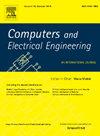A multilevel network-assisted congestion feedback mechanism for network congestion control
IF 4
3区 计算机科学
Q1 COMPUTER SCIENCE, HARDWARE & ARCHITECTURE
引用次数: 0
Abstract
Network-assisted congestion control leveraging Explicit Congestion Notification (ECN) is an effective way to deal with congestion issues on the Internet. However, we believe that the existing ECN mechanism in the TCP/IP protocol stack may require further optimization to effectively address the evolving congestion challenges introduced by emerging technologies like immersive AR/VR applications and the burgeoning field of the Internet of Things (IoT). To that end, we propose a multilevel congestion notification mechanism called Enhanced ECN (EECN) that leverages the existing two ECN bits in the IP header to notify two levels of congestion in the network and uses the corresponding two bits in the TCP header to negotiate EECN during the handshake and echo congestion experienced back to the sender. Additionally, we propose a congestion control mechanism that triggers different congestion control responses based on the average RTT and multilevel congestion feedback received from the network, which yields promising results, highlighting the effectiveness of utilizing multilevel congestion feedback. The proposed EECN mechanism reduces packet drop by 70% compared to ECN, by 95% compared to TCP New Reno without ECN, and by 40% compared to VCP. The packets marked are reduced by 96% compared to ECN and 76% compared to VCP. Furthermore, the proposed approach reduces flow completion time by 61% compared to ECN and enhances the throughput of short-lived network flows, which are particularly pronounced in IoT environments.
求助全文
约1分钟内获得全文
求助全文
来源期刊

Computers & Electrical Engineering
工程技术-工程:电子与电气
CiteScore
9.20
自引率
7.00%
发文量
661
审稿时长
47 days
期刊介绍:
The impact of computers has nowhere been more revolutionary than in electrical engineering. The design, analysis, and operation of electrical and electronic systems are now dominated by computers, a transformation that has been motivated by the natural ease of interface between computers and electrical systems, and the promise of spectacular improvements in speed and efficiency.
Published since 1973, Computers & Electrical Engineering provides rapid publication of topical research into the integration of computer technology and computational techniques with electrical and electronic systems. The journal publishes papers featuring novel implementations of computers and computational techniques in areas like signal and image processing, high-performance computing, parallel processing, and communications. Special attention will be paid to papers describing innovative architectures, algorithms, and software tools.
 求助内容:
求助内容: 应助结果提醒方式:
应助结果提醒方式:


